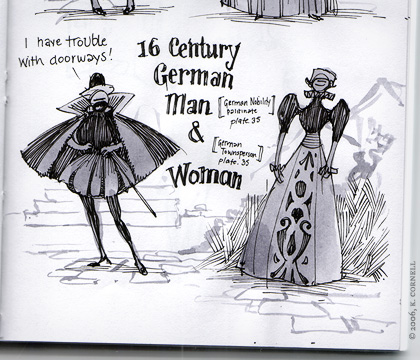 |
| Let's just call them the original Cheaper By The Dozen Source: 20th Century Fox |
2. Johannes Georg (6/31/1659 -1733)
3. Anna Marie (1/1/1661 - ????)
4. Hans Conrad (09/06/1662 - 11/12/1699)
5. Johannes (08/04/1664 - ????)
6. Margaretha (10/28/1665 - ????)
7. Agnes (04/07/1667 - 08/08/1667)
8. Georg (12/20/1668 - ????)
9. Elisabetha (04/12/1670 - ????)
10. Agnes (07/29/1671 - ????)
11. Frantz (01/28/1674 - ????)
12. Euphrosina (05/07/1676 - ????)
Although my story will continue with #4 Hans Conrad, I want to take you down a little bunny trail first. In my research I came across some written works with Ergezinger names to them. Johannes Georg (#2) is one of them. According to the registers of the University of Tübingen. he worked as deputy head of a grammar school in Delmenhorst. (From: Volume 3: 1710-1810, ed. Albert Buerk and Wilhelm will, Tübingen 1953; The Matrikeleintrag No. 33086 of 23 October 1732)
The book is titled The Collection of the Canonical Scriptures of the Holy Modern Against Certain Objections Claim (rough translation cause it is written in Latin and I have yet to mark off become fluent in Latin on my bucket list). Johannes Georg is listed as a respondent on the work under the author Christian Eberhard Weismann. Although the book was published in 1737 after Johannes Georg's death, this seems like a common practice during this period.
 |
| Source: University of Tübingen |
Back to my story, Hans Conrad married Catherine Egeler and they had 5 children. Their oldest Balthas Ergezinger was born on April 16, 1695 and is my direct relation. The couple's other children were Hans Jacob (b. 12/02/1688), Hans Conrad (b. 1692), Johannes (b. 08/05/1697), and Hans Jerg (b. 03/12/1699).
Interestingly enough there is an author in the extended family too. Hans Conrad (son of Jon Georg b. 1659 who was a surgeon in Renningen), nephew of my relative Hans Conrad (b. 1662), attended the University of Tübingen and collaborated on two different works. The first was published in 1712 called De Obligatione Rei Ad Sustinendam Poenam (The Obligation to Support the Penalty).
 |
| Source: University of Tübingen |
The second work was published in 1718 Dissertatio Morals De Obligatone Iuramenti (The Social Moral Obligation)
 |
| Front cover Source: University of Tübingen |
 |
| The afterword at the end of the book (still working on the translation Google translate made no sense) Source: University of Tübingen |
He wrote a third work titled: Breve & Primum ac Tenue Historix Monasterii Blabyrensis, à Comitibus Palatinis Tubingensibus Quondam Excitati, Rudimentum ab A. D. 1095 ad A. C. 1747. quantum licuit, ex idoneis documentis delineatum. This work was about the history of the Blaubeuren monastery.
In regards to his work at Tübingen, according to the registers of the University of Tübingen. Volume 2: 1600-1710, ed. Albert Buerk and Wilhelm will, Tübingen 1953 "The Matrikeleintrag No. 30685 of 26 June 1709 reads: "Johann Conrad Ergezinger Renningensis". This book states that he worked as a tutor in the Duke metallic scholarship upon completion of his theological studies.





